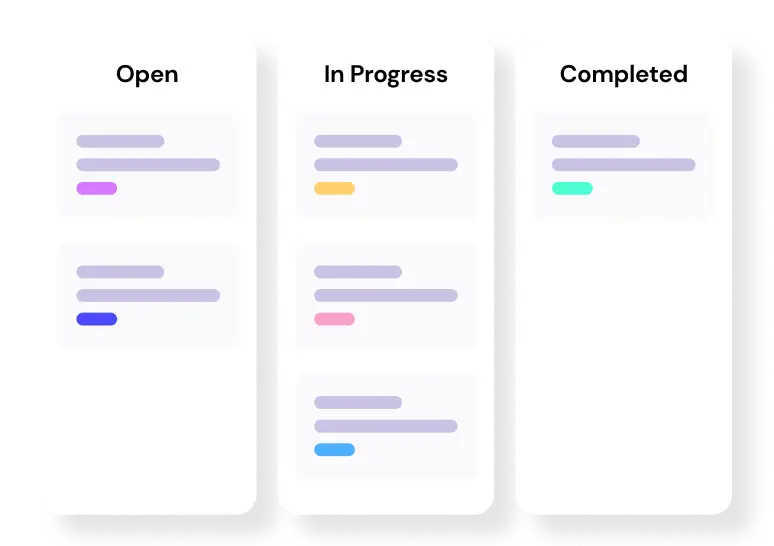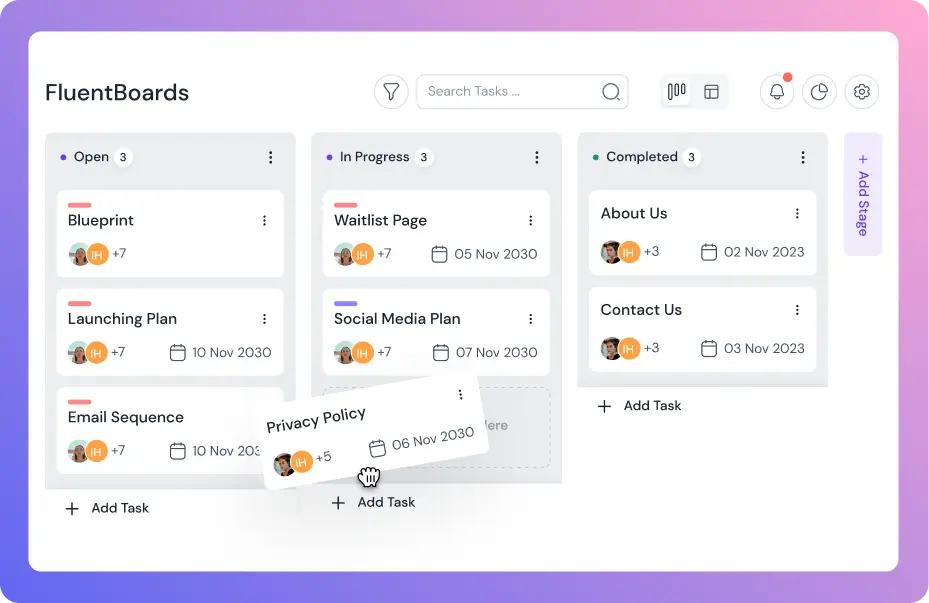
Project Team 101: What is a Project Team and How to Build a Winning One?
The strength of the team is each member. The strength of each member is the team.
Phil Jackson
The essence of Phil Jackson’s quote highlights a simple truth: each person adds strength to the team, and the team, in turn, strengthens each person.
But here’s a reality check – building a perfect project team isn’t easy, and hassles can arise at every turn.
However, don’t worry, we’re here to help! In this piece, we explain what is a project team, and how to build a perfect one from start to finish.
So, it’s time to read on!
What is a Project Team?
A project team is a group of skilled individuals who collaborate on a specific project to achieve its objectives and complete it within the planned timeline and budget.
Often, the team is divided into smaller groups or departments, each focusing on its area of expertise to keep the project organized and on track. Typically, a project manager leads the team, ensuring that each member is clear about their role.
And, the real strength of a project team lies in:
- Selecting the right team structure
- Understanding the roles within the team
- Assigning the right members to each responsibility
- Ensuring clear and open communication among different groups
So, we can say, that a project team is a group of individuals who follow a structured process, each with assigned duties and responsibilities. They work together, communicate openly to enhance the project, and are committed to achieving the project’s objectives and success.

Level up your WordPress project management game with this Trello equivalent solution – where limitless possibilities come at an unbeatable price!
Common Roles and Responsibilities of a Project Team
A project team is made up of distinct roles, each with specific responsibilities that ensure tasks are completed effectively and on time.
And, having a clear idea of these roles will help us identify all the stakeholders of a project early and build a project team that covers every skill set and expertise you need to complete a project successfully.
Here are the five most common roles found in every project:
- Project Sponsor: Aligns the project with business objectives, supports the project manager, provides guidance, and resources, and ensures the project meets organizational goals.
- Project Manager: Guides the team, tracks time, cost, and quality, connects with stakeholders, and listens to team needs within a structured framework.
- Project Analyst: A project analyst (aka business analyst) helps guide the project, making sure it stays on track by handling data. They turn complex information into useful insights that keep the project aligned with the company’s goals.
- Resource Manager: The resource manager makes sure the team has the right people, tools, and materials. In smaller projects, the project manager usually takes care of these tasks, but in larger projects, the resource manager becomes crucial.
- Project team member: Works on project stages, contributes to tasks, collaborates with others, reports progress, and communicates challenges to the project manager.
Here is our detailed guide on the different roles and responsibilities of a project team
Different Types of Project Team Structures
A project team can follow various structures, each tailored to the project’s needs and complexity. Common structures include functional, matrix, and projected.
- Functional project team structure: A functional project team structure organizes departments by expertise, with functional managers overseeing their teams. Functional managers lead departments and connect regularly with an executive.
- Project-based team structure: In a project-based organizational structure, team members are pulled from different functional departments to form a temporary team focused on a specific task.
- Matrix-based project team structure: A matrix organizational structure arranges team members in a grid format, allowing them to report to both a functional manager and a project manager.
Check out our detailed blog on project team structure to gain in-depth insights and discover a few additional types!
How to Build a Project Team
Building a project team requires more than just effort—it demands a strategic approach to ensure you check all the boxes and assemble a team capable of meeting your project’s needs effectively.
Here’s a step-by-step process you can follow to build a project team that delivers results:
1. Define project goals and objectives
Clearly outline the specific goals and objectives the project aims to achieve. Use the SMART criteria—Specific, Measurable, Achievable, Relevant, and Time-bound—to ensure each goal is clear and actionable. This will guide the team and provide a reference point for measuring progress.
2. Set some ground rules
Establish foundational rules to guide team interactions and project workflow. These might include communication protocols, conflict resolution methods, and norms for collaboration. Ground rules promote a healthy team culture and improve efficiency by setting clear expectations for behavior and work standards.
3. Decide roles, responsibilities, and team structure
Analyze your project goals and available resources to choose the most suitable team structure. Don’t forget to define the key roles within the team and outline the responsibilities each role will be accountable for.
Clearly defining roles prevents overlap, promotes accountability, and ensures that everyone understands their duties and performance expectations.
4. Identify required skills
Determine the skills necessary to complete each task effectively. Consider both hard skills (like technical or analytical abilities) and soft skills (like communication and problem-solving) that will be needed throughout the project phases.
5. Onboard the right team members
Choose team members who possess the necessary skills. Look for individuals with complementary abilities to boost versatility and collaboration.
Start by evaluating your existing resources to see if their skill sets match the project requirements and whether they’re available. If you find any skill gaps, consider bringing in external talent.
And last but not least, go through the project’s to-do list once again and assign the right tasks to the right teammates.
Here are some tips for effective project team management
Benefits of Establishing a Project Team
Let’s get straight to it—yes, project management challenges are inevitable.
But here’s the good news: while you may not be able to eliminate every challenge, building a strong project team with clearly defined roles and responsibilities can make the journey significantly smoother.
Here’s how:
- Better collaboration: Establishing a project team has one cream-of-the-crop benefit: collaboration. This encourages open sharing of thoughts. It promotes creativity and leads to innovative solutions.
- Supportive environment: A project team creates a supportive, positive work environment where team members feel valued and motivated, leading to stronger connections, shared knowledge, and enhanced overall performance.
- Improved productivity: A well-structured project team enhances productivity through streamlined feedback, efficient task allocation, and optimized workflows, driving impactful results.
Learn more about why collaboration matters!
Build Your Top-Notch Project Team Strategically!
That’s a wrap! Applying these insights will help you build a project team that’s confident and ready for any challenge.
Remember, each project team brings fresh opportunities to learn, grow, and work together. Be part of the journey, lift each other, and celebrate each success along the way.
Thanks for reading! Your insights are welcome! Share your thoughts below. Cheers to winning project teams!
Let’s redefine project management with FluentBoards!
Get Tips, Tricks, & Updates
We won’t send you spam.









![how to create a project management workflow [x steps] (2)](https://fluentboards.com/wp-content/uploads/2025/11/How-to-create-a-project-management-workflow-x-steps-2-768x402.webp)





Leave a Reply